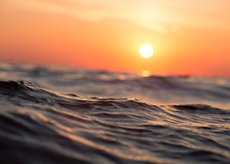New publications
How many viruses live in the ocean?
Last reviewed: 02.07.2025

All iLive content is medically reviewed or fact checked to ensure as much factual accuracy as possible.
We have strict sourcing guidelines and only link to reputable media sites, academic research institutions and, whenever possible, medically peer reviewed studies. Note that the numbers in parentheses ([1], [2], etc.) are clickable links to these studies.
If you feel that any of our content is inaccurate, out-of-date, or otherwise questionable, please select it and press Ctrl + Enter.

Scientists have calculated that the waters of the World Ocean are home to (think about this figure) just under two hundred thousand different viruses.
For seven years, from 2006 to 2013, the research vessel Tara collected water samples from different parts of the oceans. The water for testing was taken from different geographical locations and depth levels. The researchers' goal was to identify the microorganisms that existed there, including bacteria and viruses, as well as small multicellular organisms that were no larger than fish eggs. After assessing the "catch," the experts produced a report. However, contrary to expectations, it did not cover the quantity and quality of the microorganisms found in general, but only the viral particles. The fact is that scientists were literally shocked by the number of DNA viruses that were found in ocean waters: 195,728 varieties. Incidentally, it was previously assumed that there were no more than fifteen thousand ocean viral microorganisms.
According to the researchers, the distribution of viruses is uneven. For example, in ocean waters, scientists identified five distinct ecological regions that differ in viral content. In addition, polar waters had greater viral "diversity" than equatorial waters. And this turned out to be an interesting discovery, since the animal world has the opposite version of this pattern: biological diversity increases and expands in the direction from the poles to the equatorial line.
Over the course of a day, viruses present in ocean waters attack and destroy approximately 20% of microbes that also inhabit the ocean. Indeed, viral microorganisms are of great importance for building the food chain, for the organic cycle in the ocean ecosystem. Assessing the number of viruses and their reaction to changes in environmental conditions is extremely important information for scientists.
So far, experts cannot say exactly what viruses are being discussed. But the peculiarities of the spread of microorganisms that scientists encountered allow us to pay attention to some specific types. A more detailed study will be carried out in further research expeditions.
Scientists note that the results of the work clearly demonstrate the fact that viruses are an obligatory component of the oceanic ecological system model. Whether such a number of microorganisms poses any danger is still unknown.
"Because one virus can produce thousands of other viruses, the scale of the colonization can increase rapidly," the scientists explain.
"We now have a new map showing where viruses are located and where they accumulate, so we can better understand their effects and impacts on our planet," explains microbiologist Matthew Sullivan of Ohio University.
Information is presented on the Gizmodo website (gizmodo.com/around-the-world-expedition-finds-200-000-species-of-vi-1834283769).
